Continued from: Patagonia Photography & Trekking
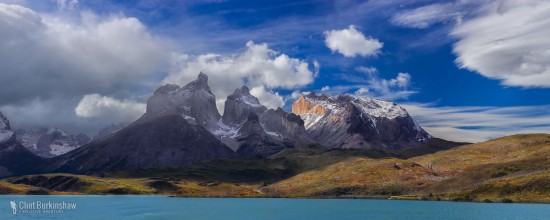
Torres del Paine National Park
Unable to contain our excitement about photographing Torres del Paine National Park, we crossed the border back into Chile and headed straight for Puerto Natales, the jumping off point for the national park. This magical land had been in the forefront of my mind for longer than I could remember.
We spent a few days in Puerto Natales to get food and camping supplies to prepare for the several day trek in Torres del Paine. Chatting to other trekkers that had just finished their trek was great, and by far the best way to find out valuable information. Though every person we spoke to came with a warning about the parks crazy weather conditions, which makes everyone a little nervous.
The time had come and we had to get the show on the road. Everyone starts the trek the moment they arrive in the national park, however I wanted to get some distant photographs of the mountains at sunrise, so we decided to go in the opposite direction and head south, further away from the drop off point for the first nights camp. We pitched a tent by the side of one of the scattered lakes and got comfy for the night with the mountains perched in the background. The night turned wet and windy, and photography conditions looked meek for the following mornings sunrise shoot.
The 4am alarm sounded and I poked my head out the tent. I couldn’t see a thing! It was raining quite heavily and there were dense clouds everywhere. Not good! I had about an hour and fifteen minutes to sunrise so I snoozed the alarm for another half an hour and crossed my fingers. The second time the alarm went off, some of the clouds had lifted, but they were blanketing the horizon behind where the sun was going to rise. Without hope, I begrudgingly got myself out of my warm sleeping bag, grabbed my camera, tripod, and dragged my sleep deprived body up to the top of the nearby hill. Agonisingly cold I sat there just staring at the mountains, shivering, telling myself that I should just go back to bed, when I saw a flicker of red. A hole in the clouds had opened up behind me where the sun was starting to rise. To my surprise several rays of light bursted through and lit up the whole scene in front with a beautiful deep red colour. It was perfect! Even though I couldn’t feel my fingers, I snapped away for about five minutes until the light was gone. While it lasted only a couple of minutes, it was absolutely beautiful and I was so happy that I was there to capture this moment.
With the sun getting higher in the sky, we trekked an hour back to the traditional starting point where we could catch a ferry to the base of the mountains. As the ferry powered across one of the turquoise lakes you get another one of the most amazing views of the Cuernos and Torres peaks. There is a few different treks you can do here, with the most common being the ‘W’ trek that lasts for five days, but can easily be turned into the ‘Q’ trek that goes for eight to ten days.
You don’t need a guide or a porter, however you will need to carry all of your equipment and food for the several day period that you’ll be in the mountains. With my camera gear, tripod, tent, food and clothes, my pack weighed in at around 23kg. You’ll have to pack for all weather types due to the crazy changing climate this area of the world hits you with. The path may be easy to follow, but the conditions certainly are not. There will be times where the weather will beat you down until you’ll want to call it quits. But persevere through the rain and cold, and you shall arrive back in Puerto Natales with the biggest feeling of achievement.
Moving on through the mountains, we spent the next few days sleeping in the woods between trees in order to break the gale force winds that would regularly hit. Our tent was a small two man tent (two man, not two man + luggage by the way) and the nights that got absolutely freezing. During the day we’d hike up valleys to be surrounded in all direction by snow capped peaks, we’d sit and watch avalanches regularly fall from a hanging glacier, and we’d stroll by beautiful blue lakes while looking up at the mountains towering above us. Scenery was very dramatic and simply beautiful!
On the last morning, the alarm screamed at 2:30am in order to commence a four hour hike straight up the mountain to get to Mirador Los Torres for sunrise. The famous view of the Torres peaks that everyone goes to see. Pitch black we searched our way along the loose weaved path up the mountain to finally reach the top where you scramble over hundreds of boulders and come to a rest and wait with fingers crossed for that golden light to hit those towers. For us it nearly didn’t happen. The sun rose, but behind clouds, so everyone took their photographs and began their descent. While I was disappointed, it was still a magic view. My wife and I stayed behind a little longer than everyone else, but we decided to head down eventually. The moment we left, the clouds parted and the Torres lit up a beautiful orange. I ran my hardest for a few minutes to get back into position and re-took every single one of my photos. I finally got that sunrise I was after.
I’ve seen many amazing mountain ranges in the world, and I have to say that these are arguably one of the most beautiful and unique landscapes there is. Photographing Torres del Paine will provide you with memories that’ll last for a life time.
Photographing Patagonia
Photographing Patagonia is something on every landscape photographers list. Housing a very unique environment found no where else, enthusiasts and pros alike will flock from all corners of the globe to try and capture these sweeping and dramatic vistas. Unfortunately conditions don’t always cooperate when it comes to Patagonia. Weather patterns can be unforgivable. But you won’t know if you don’t try! If you do make the journey, both you and your equipment is going to get a hammering, so ensure that you bring waterproof clothing and housing for your photography bag and everything else, oh and ensure you’ve got a few plastic bags that you can wrap your equipment up in a few seconds with. Yes conditions can change that fast. The winds here are the strongest I’ve ever seen, so you’ll need a sturdy tripod to prevent camera shake from those psychotic wind gusts, and lots of cleaning equipment. Photographing Torres del Paine national park is the nature photographers dream, so don’t leave home without a wide angle lens. If you’re also planning to step back a bit and capture the mountain ranges from a distance, I’d recommend something around 50-75mm (or a good standard zoom lens) in addition.
Visual Wilderness https://ift.tt/2N9ihc4
Sourced by Time Trap Photography sharing the best photography tips, news and tricks throughout the industry. Time Trap Photography is dedicated to freezing those special moments in life that can be revisited and admired for generations to come. - Shannon Bourque
Please visit our main site for booking availability and rates.

Receive valuable industry knowledge delivered free to your email each day.


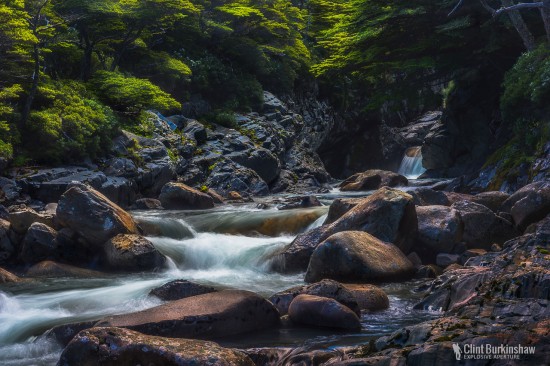
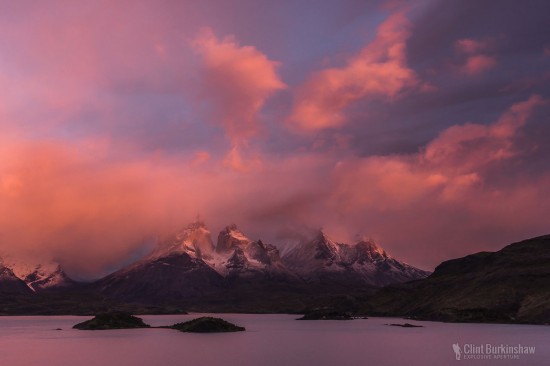
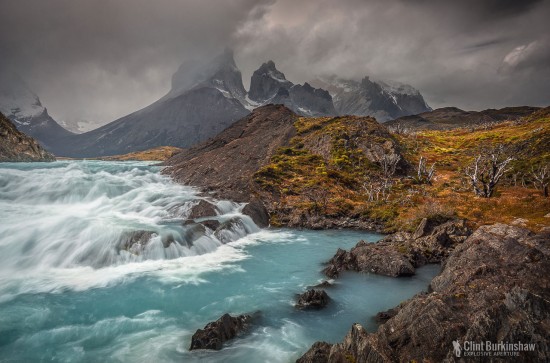
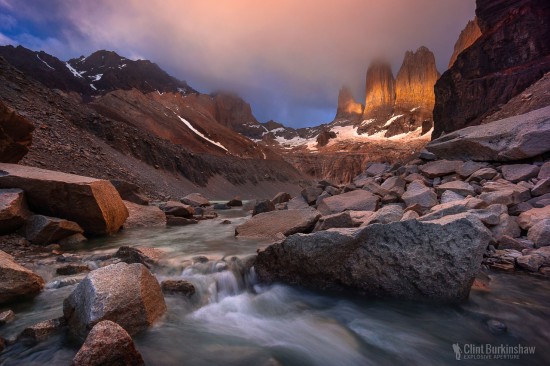




No comments:
Post a Comment
Thank you so much for your comment. A moderator will review and approve all relevant posts. We appreciate your support and encourage you to stay with us by subscribing to our email updates. Where you can easily pick and choose what photography subjects interests you. Subscription link: http://bit.ly/photo-sub